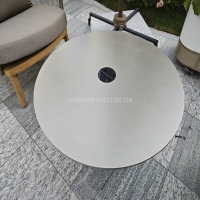Welcome to the website for landscape facilities products and knowledge.
How does the table’s design promote user comfort, such as ergonomic edges or seating compatibility?
In today's dynamic work environments, table design plays a pivotal role in promoting user comfort through carefully considered ergonomic principles. Modern tables often feature rounded or beveled edges that eliminate sharp corners, reducing the risk of accidental impacts and pressure points on users' arms and wrists during extended use. This thoughtful edge design allows for natural arm movement and minimizes discomfort, particularly during long working hours.
Beyond edge considerations, advanced tables incorporate height-adjustability mechanisms that cater to diverse user preferences and body types. These adjustable tables enable individuals to find their ideal working position, whether sitting or standing, thereby reducing strain on the back, neck, and shoulders. The integration of smooth, electric or manual adjustment systems ensures seamless transitions between different heights without disrupting workflow.
Seating compatibility represents another crucial aspect of comfort-oriented table design. Designers carefully calculate ideal clearance heights and knee spaces to accommodate various chair types, from traditional office chairs to ergonomic kneeling stools. The table's underside structure is engineered to provide ample legroom while maintaining stability, allowing users to position their chairs comfortably without constraints. Many contemporary designs also incorporate cable management systems that keep wires organized and out of the way, preventing tangling around chair legs and enhancing overall mobility.
Material selection further contributes to comfort, with warm-toned woods and soft-touch finishes creating an inviting atmosphere. Some manufacturers incorporate built-in comfort features such as slightly textured surfaces that reduce glare and wrist fatigue, or integrated padding along the table's front edge where users frequently rest their arms. These subtle yet significant design elements work collectively to transform the table from mere furniture into a genuinely supportive component of the user's environment, promoting both physical comfort and mental well-being throughout the workday.
Related search:

Recommendation
Outdoor stainless steel table with solar-powered ambient lighting feature - excellent design.